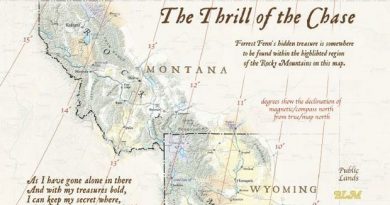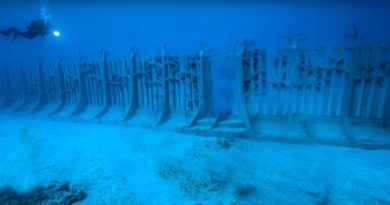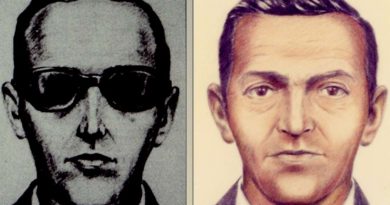Mystery Rock Inscription in France Mystifies
A village in western France is offering a €2,000 (£1,726) prize for help in deciphering a 230-year-old mystery rock inscription found on a rock on a remote beach. Until now no-one has been able to make out the meaning of the 20 lines of writing, discovered a few years ago.
The metre-high slab is in a cove accessible only at low tide near the Brittany village of Plougastel.
Among the normal French letters some are reversed or upside-down. There are also some Scandinavian-style Ø letters.
Two years are visible – 1786 and 1787 – dating the inscription to a few years before the French Revolution. There is also the image of a ship with sails and rudder, and a sacred heart – a heart surmounted by a cross. But the writing has defied all attempts at interpretation by local academics. Some think it may be in old Breton or Basque, and that the person who wrote it may only have been semi-literate.
The letters may relate to the sounds of words as he or she heard them.
In one section the letters read: “ROC AR B … DRE AR GRIO SE EVELOH AR VIRIONES BAOAVEL”.
Another reads: “OBBIIE: BRISBVILAR … FROIK … AL”.
One theory is that the inscription is linked to the building of naval defences near this point. A fort and gun emplacements – whose remains can still be seen – were erected here in the 1780s to protect the Bay of Brest. Until 1783 France and England were at war.
“We’ve asked historians and archaeologists from around here, but no-one has been able to work out the story behind the rock,” says Dominique Cap, Mayor of Plougastel.
“So we thought maybe out there in the world there are people who’ve got the kind of expert knowledge that we need. Rather than stay in ignorance, we said let’s launch a competition.”
The public appeal for help is called “The Champollion Mystery at Plougastel-Daoulas” – honouring Jean-François Champollion, the linguist who deciphered the Rosetta Stone’s ancient Egyptian hieroglyphics in the 19th Century.
Linguistic and archaeological enthusiasts are asked to register at the mayor’s administration, then they will be sent photographs of the inscription. Hundreds of people have already expressed interest.
When entries close in November, a panel will choose the most plausible interpretation of the mystery.
Source: BBC News



